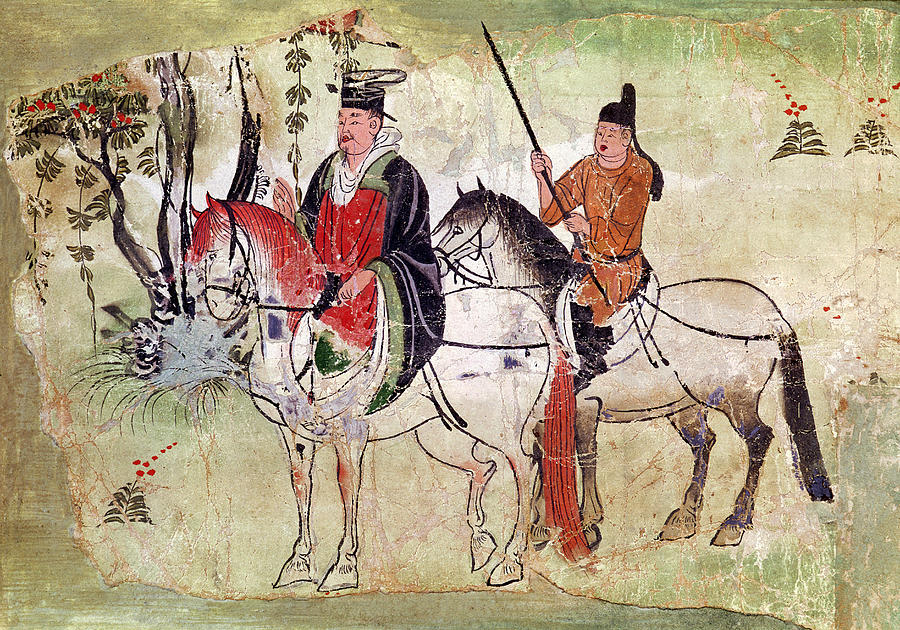A team of American researchers wanted to know how much social mobility existed in medieval China – could a person reach success through education and opportunity, or were they limited by the lack of family connections and not being part of the aristocracy? While these questions can be more easily answered in today’s industrialized nations, examining the same phenomena from past centuries is a more daunting task because relevant statistics are harder to come by.
However, the researchers discovered a way to examine professional advancement in medieval China from the tomb epitaphs during the Tang Dynasty. These epitaphs contain the ancestral lineages, names, and office titles (e.g., Minister of Personnel, Minister of the Court of Judicial Review, and Palace Deputy Imperial Censor) of the deceased’s father and grandfather as well as the deceased’s career history and educational credentials—ample data points for measuring social mobility across generations.
surname and choronym; Blue grandfather and father’s full name and office rank; Yellow the deceased elite’s career trajectory; Green age at death and time of death. Source: National Library of China.
Notably, their analysis shows that education during this period was a catalyst for social mobility. “Epitaphs written in medieval China, including the Tang Dynasty, tend to be highly detailed descriptions of an individual’s life with stylized prose and poems, and they contain granular information about the ancestral origins, family background, and career history of each deceased individual,” says Fangqi Wen, an assistant professor of sociology at Ohio State University and a co-author of the study.
Their findings, which appear in the Proceedings of the National Academy of Sciences (PNAS), show that the patterns of relationships of social origins, education, and adult achievement somewhat resemble the patterns in the United States in the 1960s and 1970s. In drawing from 3,640 epitaphs of males as well as other data from reliable historical sources, such as dynastic records and third-party compiled genealogies, the researchers’ analysis revealed a decline of Chinese medieval aristocracy and the rise of meritocracy 1300 years ago.
The researchers discovered a specific reason for this development: whether or not the deceased passed the Keju, or the Imperial Exam, which was developed during this period for the purposes of selecting officials for civil service posts. They found that the Keju, which was administered until the early 20th century, served as a catalyst for social mobility—much as higher education has done in the U.S. since at least the 1960s.
The researchers write:
Rising education and institutions shaped opportunities for advancement in Tang China without modernity, much like modern higher education has in industrial and postindustrial nations, at least since the 1960s. Specifically, men’s status in the hierarchy of medieval China came to depend more on their own achievements and less on the status of their family of origin. Blau and Duncan’s conclusion about the United States in 1962 applied to Tang China a millennium before: “…superior status cannot any more be directly inherited but must be legitimated by actual achievements that are socially acknowledged.”
Their study also provides evidence that the aristocracy in this period of Chinese history was undergoing a decline – it was becoming harder for them to maintain their high status as people from humble backgrounds could rise and take on more powerful and wealthy positions. Even those who had success in the Keju exams found that their father’s status would no longer be a factor.
One could equate what was happening in Tang Dynasty China as similar to the idea of the ‘American Dream’ where people believed that there would be opportunities for them to achieve successful careers through their own work and ability.
“Education is central to our understanding of intergenerational mobility,” observes Michael Hout, a co-author and professor of sociology at New York Univesity. “Many think it was a 20th-century development. But, as we can see from centuries-old data, there are phenomena linking origin, education, and careers very much like contemporary patterns.”
The article, “Social mobility in the Tang Dynasty as the Imperial Examination rose and aristocratic family pedigree declined, 618–907 CE,” by Fangqi Wen, Erik H. Wang and Michael Hout is published in Proceedings of the National Academy of Sciences. Click here to read it.
Top Image: Two men on horseback in this Tang Dynasty painting – Musée Annam / Wikimedia Commons











